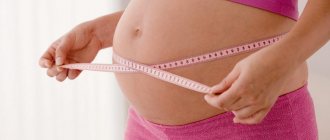Smoking is a very harmful and very strong habit. Unfortunately, some women are not ready to give up cigarettes even during pregnancy, but it is smoking during pregnancy that poses the greatest danger to both the life of the fetus and the well-being of the expectant mother.
Unfortunately, pregnant women do not see cigarettes as a direct threat to the life and health of the child developing in the womb, and they consider the prohibitions of doctors to be an unnecessary precaution. So that you can assess the real scale of the problem, in this article we will talk about how smoking during pregnancy affects the fetus, the dangers of smoking during pregnancy, and how to quickly quit smoking during pregnancy.
Why you should quit smoking during pregnancy
There is a misconception that switching to light cigarettes during pregnancy can reduce the harmful effects of smoking on the fetus to a minimum. In fact, the dose of nicotine in light cigarettes is not much lower than in regular cigarettes, and the content of toxic tars and toxic compounds in tobacco smoke is almost the same.
Even if you smoke only 2-3 cigarettes a day, the resulting nicotine will be enough to endanger the life and health of your baby. Therefore, during pregnancy, it is important not to reduce the daily dose of nicotine consumed, but to completely stop smoking.
For many women, in order to understand why it is worth quitting smoking during pregnancy, it is important to understand exactly how maternal smoking affects the fetus. The tiny child inside a woman is defenseless - his fate depends entirely on the condition and lifestyle of his mother.
The harm of smoking in the first weeks of pregnancy is maximum - the placenta has not yet formed and is not ready to protect the fetus from toxins from the mother’s blood. When the formation of the placenta is completed, it becomes the only feeding artery and the main protector of the baby. But don’t think that smoking in the second and third trimesters of pregnancy is safe.
The placenta connects the maternal bloodstream with the fetal bloodstream, transferring nutrients from the woman's body to the baby while preventing the entry of most toxic compounds that can harm the fetus. However, when smoking, drinking alcohol or other harmful substances, the placenta cannot cope with so many toxins - as a result, the fetus and the placenta itself suffer.
Negative effects of smoking at all stages of pregnancy
Smoking is dangerous at every stage of fetal development. Let's take a closer look at how smoking affects the course of pregnancy.
Smoking in the first trimester (from conception to 13 weeks)
Until the 14th week, the active development of vital systems of the baby’s body occurs. This is why smoking during early pregnancy can cause irreparable harm to the baby. All internal organs and the umbilical cord are formed, through which nutrients enter the fetus and its waste products are removed. Already in the 3rd month of pregnancy, the baby is moving, which is not felt at all by the mother due to the small weight (about 30 g) and size (approximately 9 cm) of the fetus. Carcinogens entering the mother's body can cause physical and psychological abnormalities in the development of the baby.
Often, smoking during early pregnancy causes miscarriage - blood circulation in the developing placenta is disrupted, and this risks its detachment. A healthy lifestyle is especially important for those who have had complications during pregnancy in the past. [3]
Smoking in the second trimester (from 14th to 27th week)
The second trimester of pregnancy is a period of active intrauterine growth of the child. The brain and other organs continue to form, the immune system gains strength, and the fat layer increases. The child begins to move more actively - the mother already feels it.
The baby “breathes” through the placenta, which is already fully formed. When a pregnant woman smokes (especially if she uses a whole pack of cigarettes a day), the baby receives significantly less oxygen than is required during the normal course of pregnancy. And this is the risk of developing acute or chronic fetal hypoxia (oxygen starvation). Carcinogenic substances disrupt the natural growth and development of the baby. There is a serious threat of premature birth or death of the fetus in the womb. [3]
Smoking in the third trimester (from 28 weeks to birth)
In the last trimester, the baby's vital organs continue to develop - the heart, brain, liver, kidneys. There is an active accumulation of calcium, iron, protein and antibodies in the baby’s body. The health of the baby after birth - the presence or absence of chronic diseases - will depend on the lifestyle the expectant mother now leads.
Smoking during pregnancy after 27 weeks. - a serious risk for both the baby and the woman herself. A cigarette smoked causes oxygen starvation of the fetus, which causes severe harm to it. There is evidence that if an expectant mother has a bad habit, the fetus does not gain weight as actively as in non-smoking women. At this stage, nicotine provokes a state of malnutrition in the child - a discrepancy between the physical development of the baby’s organs and the period of pregnancy.
The baby will be born soon. But smoking can bring this moment closer, which is undesirable. In some cases, the addiction causes premature birth due to thinning and detachment of the placenta. This is fraught with disruption of the child’s growth and development in the future.
According to scientists, the incidence of premature birth among pregnant women who smoke was 22%. For comparison: among non-smoking mothers there are significantly fewer cases of early births - 4.5%. [1]
How does smoking in the third trimester affect the health of the expectant mother? Preeclampsia is detected in women with an addiction more often than in non-smokers. This is a complication of a normal pregnancy, which can be manifested by edema, increased blood pressure, “washing out” of protein from the body and cramps. Preeclampsia not only negatively affects the development of the child, but can also cause complications during childbirth, and also lead to the death of a woman in especially severe cases. [3]
The influence of maternal smoking on the course of pregnancy and the fetus
Practice shows that smoking during pregnancy leads to a number of negative consequences:
- Placenta previa. In women who smoke, the placenta is often located too close to the os of the uterus (and sometimes partially or completely covers it), which threatens its detachment, premature birth, except for the option of natural birth, and severe labor bleeding. If placenta previa in a smoking woman is not diagnosed in a timely manner or is detected only during childbirth, it can cause the death of the mother and fetus.
- Violation of the form and functions of the placenta. In women who smoke, the placenta changes – it becomes less elastic and more round. The natural blood flow in it is disrupted, which harms the nutrition of the fetus and its provision of oxygen. Fetal hypoxia is observed much more often in smoking women than in non-smoking pregnant women.
- Premature aging of the placenta and its pinpoint or extensive infarctions. Smoking during pregnancy greatly increases the risk of premature aging of the placenta. In addition, placental infarction in women who smoke is quite common, while this problem is extremely rare in non-smoking pregnant women.
- Spontaneous miscarriage, premature birth, intrauterine fetal death. Smoking during pregnancy most often causes miscarriages or premature births. The influence of toxins on a defenseless child and a serious disruption of placental metabolism due to smoking during pregnancy leads to intrauterine fetal death.
- Low birth weight children. If the expectant mother was unable to quit smoking during pregnancy, her baby is likely to be born with low body weight, but it is the baby's body weight at birth that often determines its viability and health status.
- Intrauterine developmental defects. Smoking during pregnancy greatly increases the risk of developing serious pathologies in the fetus. Among such pathologies, the most common are: heart problems, disorders in the formation of the bone apparatus, diseases of the liver and other organs.
- Inhibition of intellectual development, psychological deviations, and a tendency toward nicotine addiction in a child are all consequences of smoking during pregnancy. In addition, children born to a smoking mother are more likely than others to have learning problems - they perceive information worse, are difficult to discipline, and show absent-mindedness and lack of concentration. In addition, such children more often suffer from nervous excitability and experience difficulties communicating with peers and elders.
Pregnancy and smoking
In almost all countries of the world there is a pronounced increase in the number of women smoking. In the USA, for example, at least a third of all women over the age of 15 smoke, 52-55% of pregnant women are smokers, and 20-25% of them smoke throughout pregnancy.
In the UK, 43% of pregnant women smoke, and among primiparous women, smokers were on average 1.9 years younger than non-smokers, and among multiparous women, 2.2 years younger.
In Australia, according to the literature, by the time pregnancy was established, 40% of women smoked, after which some stopped smoking, but 33% of pregnant women continued to smoke. After pregnancy was established, 9% of people in Switzerland stopped smoking. The number of women of childbearing age who smoke in Canada is on the rise.
J. Henderson (1979) stated that in 1975, 52.3% of pregnant women smoked, and in 1978, 54.7% of pregnant women. When pregnancy was established, 6.6 and 8.2% of smoking women, respectively, stopped smoking. 39% stopped smoking in the 1st month of pregnancy, 16% in the 2nd month, and 14% in the 3rd month. 6 months after birth, those who stopped smoking began smoking again.
Currently, other, no less substantiated information has been accumulated about the significant spread of smoking among pregnant women in all countries of the world.
In this case, social factors and conditions play an important role. D. Rush and P. Cassano (1983) provide data on the influence of belonging to certain social groups (Great Britain), as well as marital status on women’s smoking during pregnancy. Women belonging to a low social group (unskilled workers) smoke more during pregnancy and a lot, and rarely quit smoking on the eve of pregnancy. Similar data are typical for pregnant unmarried women.
Unpleasant effects
Sidle N. (1982), based on a synthesis of the results of 336 studies, indicates a complex adverse effect of smoking on pregnancy. The review examines the negative impact of smoking on a newborn’s body weight, perinatal mortality, prematurity, as well as physical disabilities, preeclampsia, spontaneous abortions and congenital disorders, and long-term effects on the child after birth.
Pregnancy complications described in women who smoke are divided into complications in the mother, embryo, fetus, newborns and older children.
As is known, the mother, fetus and placenta represent an organic unity and this is reflected in various types of disorders that develop during pregnancy in smoking mothers.
According to R. Schneider and Hewrion, under the influence of tobacco the effects of various pathological changes of a different origin can be potentiated.
The adverse effect of smoking on the fetus is an “index” of its vulnerability, increased risk of spontaneous abortion, premature birth, perinatal mortality and even possible long-term harmful effects on the physical growth, development of the nervous system and intelligence of the child. For a summary assessment of the effect of maternal smoking on the fetus, the term “fetal” is used. tobacco syndrome."
R.K. Ignatieva believes that the frequency of unsuccessful pregnancy outcomes increases significantly in mothers who smoke.
R. Nalye's observation of 45,113 pregnant women shows that an increase in maternal body weight with increased nutrition does not protect the fetus from the adverse effects of smoking. A variety of placental changes associated with smoking have been identified in pregnant women. When studying the weight of the placenta in smoking mothers, it was found that in many cases it was lower than normal, although to a lesser extent than the body weight of newborns.
The placenta of a smoking mother is thinner and more round in shape.
Ultrastructural changes in the placenta and disturbances in placental blood flow have also been described in smokers.
The increased incidence of spontaneous abortions, neonatal mortality and subsequent slow development of newborns in smoking mothers is associated either with premature separation of the placenta and large placental infarctions, or with fetal hypoxia. Thus, Nalye R. indicates that cases of placental abruption, placenta previa, and extensive placental infarctions are the most common causes of fetal and neonatal mortality in mothers who smoked during pregnancy. These complications varied little depending on maternal weight gain.
There is evidence that smoking during pregnancy also negatively affects the state of peripheral circulation in women and helps to reduce the respiratory movements of the fetus. Carbon monoxide and nicotine contained in tobacco smoke affect the intrauterine growth of the fetus by reducing the ability of hemoglobin to deliver oxygen or due to spasm of the uterine artery and disturbances in placental function in this regard.
It has been proven that inhalation of tobacco smoke, regardless of nicotine content, leads to severe fetal hypoxia caused by carbon monoxide, which freely penetrates through the mother's placenta into the fetal blood, binds hemoglobin and forms carboxyhemoglobin.
The concentration of carboxyhemoglobin in the fetal blood is usually 10-15% higher than its content in the maternal blood, which primarily leads to a decrease in the partial pressure of oxygen in the arterial blood of the fetus by an average of 33.8% and an increase in the saturation of arterial blood with carbon dioxide by an average of 15.7%.
A decrease in fetal weight in smoking mothers may be associated with chronic hypoxia of fetal tissues caused by carboxyhemoglobin.
D.Rush (1974, New York) and then D.Davies et al. (1975, South Wales, Australia) noted that the body weight of women who smoked during pregnancy increased less than that of non-smokers. In this case, smoking intensity played a role. The authors concluded that much of this effect of smoking is mediated by decreased food intake during pregnancy, which is supported by the known effects of smoking on appetite.
The results of a number of studies have shown a truly dramatic, statistically significant connection between maternal smoking and spontaneous abortions. There is a pronounced dependence of the frequency of spontaneous abortions on the number of cigarettes smoked. The risk of spontaneous abortion in women who smoke during pregnancy is 30-70% higher than in non-smokers.
Studies in the US and UK also showed that the highest number of miscarriages and the highest neonatal mortality rates were observed in women who smoked. The mortality rate of children during childbirth among smoking mothers is on average 30% higher than among non-smoking mothers. Of the total number of children who die at birth each year in the UK, 8.3% die from causes related to maternal smoking.
In women who smoke, miscarriages occur in 22.5-41% of cases, in non-smokers - in only 7.4%. The risk of developing the symptom of sudden death of a newborn in smokers is increased by 52%. Studies in Czechoslovakia showed that in 96% of cases, miscarriage was caused by pregnant women smoking, and the onset of premature birth was directly dependent on the number of cigarettes smoked daily.
According to W. Gibel and H. Blumberg, women who smoked were 2 times more likely to have miscarriages, premature babies and stillbirths than non-smokers. W. Bucku et al. (1981) found that the perinatal mortality rate in women who smoke is 24% higher than in non-smokers, and J.Pabia (1973) believes that this figure is even higher - 43.2%.
It has been found that in the United States, 14% of preterm births are associated with smoking during pregnancy.
Stillborn children
Maternal smoking has a significant effect on the rate of miscarriage, but still less than alcohol. Thus, according to Z.Steinetal, in women who smoke 2 packs of cigarettes a day and do not drink alcohol, the frequency of miscarriages was 1.5 times higher than in non-smokers; in non-smoking women who drank alcohol regularly - 2.5 times higher than in non-drinkers; In women who combined smoking with alcohol consumption, the rate of miscarriages was 4.5 times higher than in non-drinkers and non-smokers.
O.Vangen provides data that among smoking women the rate of premature birth was 22%, while among non-smokers this figure was 4.5%. Despite the variety of quantitative data in the materials presented above, all authors emphasize the close connection between smoking, on the one hand, and miscarriages and premature births, on the other.
Stillbirth rates are especially high in families where both the mother and father smoke. It is believed that smoking even 4 cigarettes a day by a woman poses a serious risk of premature birth, which doubles when smoking 5-10 cigarettes a day.
Smoking during pregnancy significantly increases perinatal mortality (1.8-3.4 times), and social factors and conditions play an important role in this. Thus, according to O. Ruth, P. Cassano in Great Britain, perinatal mortality in the most favorable social group was 7.5 per 1000, in the least affluent social group - 26.8, and among unmarried mothers - 37.0 per 1000, while while among married mothers it was 22.3 per 1000 people. Researchers attribute about 25% of these intergroup differences to smoking.
Among all women, regardless of their social class, perinatal mortality increased as the number of cigarettes smoked during pregnancy increased. So, if for those who smoke up to 5 cigarettes per day it was 15.9 per 1000, then for those who smoke 5-14 cigarettes - 26.1, and over 15 cigarettes - already 28.3 per 1000. Perinatal mortality of twins is especially high in smoking mothers , monozygotic and dizygotic, same-sex and different-sex.
In addition, it was found that smoking during pregnancy increases neonatal mortality of children by 20% in women who smoke up to 20 cigarettes per day, and by 35% in women who smoke more than 20 cigarettes. A prospective study of 9169 pregnant women found that stillbirth rates were significantly higher in mothers who smoked and were associated with premature separation of the placenta, as well as other causes.
Maternal smoking may increase the risk of a number of other pregnancy complications. Thus, C. Russell et al. found a higher incidence of vaginal bleeding during early pregnancy in women who smoke compared to non-smokers.
R. Naeye (1980) analyzed clinical and postmortem data on 3897 cases of fetal and child deaths and reported a relationship between rates of perinatal mortality caused by placental abruption and the number of cigarettes smoked by mothers. Based on observations of 9169 pregnant women in 13 maternity hospitals in Paris, the risk of intrauterine death due to retroplacental hematoma is 6 times greater in children of smoking mothers than in non-smoking mothers.
Premature babies
An analysis of materials obtained in the Canadian city of Ontario showed that the number of newborns weighing less than 2500 g was higher by 52% in women who smoked less than 1 pack of cigarettes per day, and by 130% in women who smoked 1 pack or more per day. , compared to non-smoking women.
According to various sources, smoking women have premature babies in 6.5-33.5% of cases, while non-smokers have premature babies in only 0.8-11.2% of cases. There is evidence that smoking women are 2.2 times more likely to give birth to children weighing less than 2500 g. In general, the body weight of children born to smoking mothers is 150-350 g less than the body weight of children born to non-smoking mothers.
According to B. Bewley (1984), the viscosity of fetal blood in smoking women was 30% higher, and the average body weight of newborns was 318 g less than in non-smokers. It is characteristic that the body weight of a newborn is influenced not only by smoking during pregnancy, but also by smoking before pregnancy. Thus, in the latter, the body weight of newborns is on average 67 g less, and in those who stopped smoking immediately before pregnancy, it is 169 g less than in non-smoking women.
A study conducted in Norway by S. Nilsen et al. (1984) showed that women who smoke more than 10 cigarettes per day give birth to children with an average body weight of 327 g less and a length of 1.2 cm less than those of non-smokers. It turned out that smoking affects the weight of the placenta, reducing it by an average of 52 g. Fetal development in smoking mothers is also reduced in many other parameters (body length, head and chest circumference).
H. Goldstein (1977) compiled tables showing a decrease in the body weight of children of smoking mothers in the UK, an increase in mortality at birth and immediately after birth. M. Ounsted and A. Scott (1982) present the results of an examination of pregnant women by the pediatric department of the University of Oxford. All pregnant women were divided into groups: with insufficient fetal weight for the established period, excess fetal weight and normal. Weight gain rates were lowest in the first group and highest in the last, and the proportion of mothers who smoked was 60.7 and 15.7%, respectively.
Retardation in intrauterine development of the fetus, proven by ultrasound diagnostics, was more common in smoking women (4 times in primiparas, 3 times in multiparous women) than in non-smokers. Fetal anemia has also been reported in women who smoke.
The diagnosis of fetal tobacco syndrome can be made in the following cases:
1. The mother smoked 5 cigarettes a day or more during pregnancy.
2. The mother suffered from hypertension during pregnancy, in particular: a) there was no preeclampsia; b) normal blood pressure was recorded at least once after the first trimester.
3. The newborn had a symmetrical slowdown in growth at 37 weeks, indicated by: a) birth weight less than 2500 g and b) mass (g) to length (cm) ratio index - more than 2.32.
4. There are no other obvious causes of intrauterine growth retardation (eg, congenital anomalies, infections).
A.Boomer and B.Christensen (1982), having proved the effect of smoking on the hematological parameters of pregnant women, found that smoking mothers with average hematocrit values (31-40) had children at birth with a body weight on average 166 g less than non-smokers, and in smoking mothers with elevated hematocrit values (41-47), the body weight of newborns was on average 319 g less than in non-smoking mothers.
Thus, not only pregnant women with low hematocrit values, but also smoking women with high hematocrit values are at increased risk of having a low birth weight baby. Smoking in pregnant women also negatively affects the body weight of newborns indirectly through low levels of placental lactogen (P<0.05), which was proven using radioimmunoassay of 525 blood serum samples taken from 144 pregnant women.
According to Buchan P., children born to mothers who smoked 20 cigarettes per day had an increase in blood viscosity by 30% and a decrease in body weight by an average of 318 g compared to the control group of children born to non-smoking mothers.
R. Wainright (1983) found that when women who did not smoke started smoking between pregnancies, the birth weight of their later children was on average 67 g less than in the control group. At the same time, in 159 women who stopped smoking before their next pregnancy, subsequent children weighed 169 g more than in women who continued to smoke.
N.Butler and E.Alberman, analyzing 17,000 births in the UK, found a lower average body weight of newborns in smoking mothers. Since low body weight born to smoking mothers does not depend on the age of pregnant women and is not associated with a significant decrease in the average duration of pregnancy, it is due to slower fetal growth.
S. Kullander and B. Kaellen, in a study of 6376 births in Malmö (Sweden), found that with increasing maternal smoking intensity, body length, head circumference and shoulder girdle sizes decreased in both boys and girls. These data have been confirmed by other studies that indicate intrauterine growth limitations in various dimensions.
In a study by D. Davies et al. 1159 children born to mothers who smoked during pregnancy were examined.
As a result, it was stated that with increasing smoking intensity, the average body weight of the fetus at birth decreases. In boys and girls aged 7 to 14 days, a similar gradient was identified for body length and head circumference.
According to J. Wingerd and E. Schoen, by the age of 5 such children had less height than in the control group (3707 children were observed). N.Butler and H.Goldstein indicate that by the age of 7 there is a decrease in height (by 1 cm).
Statistically significant differences in favor of children born to non-smoking mothers were established in relation to body weight and height between the ages of one and four years.
Physical and intellectual development
Children born to women who smoke are characterized by a slowdown in not only physical, but also intellectual, including emotional, development; they begin to read and count later. H. Dunn et al. studied the neurological, intellectual and behavioral status of 7-year-old children born to smoking and non-smoking mothers. It turned out that neurological abnormalities, including minimal cerebral dysfunction, and pathological encephalograms were somewhat more common in children of smoking mothers, although this difference was not statistically significant. Psychological tests were also better in children whose mothers did not smoke.
In Great Britain in 1958, 17 thousand newborns were examined (England, Scotland and Wales). These children were subsequently examined at the ages of 7 and 11 years. A slowdown in physical and mental development was noted in children whose mothers smoked during pregnancy. Children whose mothers smoked 10 cigarettes a day or more during pregnancy were on average 1 cm shorter in height and were slightly behind in school performance compared to the control group, particularly in reading and math.
According to WHO, the harmful effects of maternal smoking during pregnancy affect children during the first 6 years of life. Children of smoking parents, compared with children from families in which they did not smoke, showed deviations in the development of reading ability, social adaptability, and in some physiological parameters. W.Gibel and H.Blumberg (1979) in the process of examining 17 thousand children of smoking mothers in the GDR, even at the age of 11 years, revealed worse performance in psychological tests, as well as in reading, writing and counting. In addition, these children showed growth retardation compared to their peers in the control group.
There is evidence of a connection between maternal smoking and hyperkinesis in children. According to these authors, smoking during pregnancy is an important cause of hyperkinetic syndrome. It should be noted that in Finland, children of smoking mothers are more likely to be hospitalized, visit doctors and use special medical services. A significantly larger number of children of smoking parents are hospitalized for pneumonia and bronchitis.
Perinatal mortality
It is important to analyze the relationship between cigarette smoking and fetal and child mortality. It has been established that women who smoke have an increased risk of perinatal death. D.Rush and E.Hass, based on literary data on 12,338 cases of perinatal death and spontaneous abortions, indicate a predominance of these indicators among smoking women by 34.4%, especially among the low-income population.
Maternal smoking, in addition to increasing the risk of spontaneous abortion, leads to an increase in early and late fetal and neonatal mortality. Smoking is an important risk factor for neonatal mortality among children of smoking mothers. Children of women who smoke are at higher risk of death (ranging from less than 10% to almost 100%) compared with offspring of nonsmoking mothers.
The mortality rate of children during childbirth among smoking mothers is on average 30% higher than among non-smoking mothers. The high risk of perinatal mortality depends on the number of cigarettes smoked (among other risk factors).
There are review data showing that the perinatal mortality rate for women who smoke up to 15 cigarettes per day exceeds the corresponding rates among non-smoking mothers in the USA by 1.12, in Canada - by 1.27, in the UK - by 1.28 times, this especially applies to twins.
L. Baric, having conducted a study of 24 thousand cases of smoking during pregnancy in the UK, believes that smoking during this period increases the risk of stillbirth and neonatal mortality by 28%, and smoking in the 2nd half of pregnancy is especially dangerous. Meanwhile, almost a third of pregnant women smoke.
In Norway, women who smoked 15 or more cigarettes per day were thought to have a spontaneous abortion rate of 14.3%. The risk of perinatal mortality during the birth of twins is 1.77 times higher in women who smoke than in non-smokers.
According to J. Andrews and J. McGarry, the rate of stillbirths per 100 births for non-smoking women was 1.3 and for smokers - 1.54, of which 0.11 and 0.39 were attributed to antepartum hemorrhage in non-smokers and smokers, respectively .
The adverse role of maternal smoking has been reported in some studies on sudden infant death syndrome (SIDS). In all these cases, a direct link was noted between maternal smoking during pregnancy and the incidence of sudden infant death. Sudden infant death syndrome occurs 19% more often during pregnancy, and 22% more often after birth in smoking mothers compared to non-smoking mothers.
According to J. King and S. Fabro, who examined about 20 thousand newborns in the United States, the relative risk of sudden infant death syndrome in smoking mothers was 4.4 compared to non-smokers.
As R. Naeye et al indicate, based on an analysis of 126 cases of SIDS, pregnancies that caused SIDS victims were characterized by a higher frequency of mothers who smoked cigarettes and had anemia. Perhaps the development of pre-mortem hypoxia also plays a role.
According to W. Rhead, it is clear that maternal tobacco smoking poses a serious risk factor for children dying due to SIDS.
According to E.N. Shigan, toxicosis in the 2nd half of pregnancy is more common when smoking (8 versus 6.3%). The incidence of amnionitis in the form of infection of the amniotic fluid and membranes is also increasing.
Child's health
D. Evans et al. indicate that cigarette smoking may act as a teratogen. To clarify the role of this factor, the authors studied smoking patterns in 67,609 pregnant women in Cardiff (Wales) from 1965 to 1976. A slightly higher incidence of smoking in pregnant women was observed with cleft lip and congenital cleft palate (cleft palate) and their combinations.
Significant changes were observed for neural tube developmental disorders; The incidence of anencephaly was consistently increased in infants born to nonsmoking mothers compared with those born to moderate and heavy smokers. There is a strong relationship between maternal cigarette smoking and severe congenital anomalies.
Women who smoke are more likely than non-smokers to give birth to children with heart defects and defects in the development of the nasopharynx, inguinal hernia, and strabismus. Smoking adversely affects the process of formation and development of the neural tube in the fetus, leading to the birth of anencephals, babies with congenital abnormalities of mental development, with a cleft palate and cleft lip.
It has been proven that smoking fathers often experience multiple morphological changes in sperm; 2 times more often than non-smokers, children are born with congenital malformations, which reflects lesions of a genetic nature.
A group of researchers from Columbia University (USA) has obtained evidence that environmental toxicity can lead to trisomy (Down syndrome). The cause is tobacco smoking, the influence of which increases with the age of the pregnant woman.
Lactation and feeding
The issue of the connection between smoking and lactation and feeding deserves attention.
Back in 1902, J. Ballantyne suggested the possibility of harmful effects on children from breastfeeding by mothers working in tobacco factories.
Subsequently, it was found that nicotine has the ability to penetrate through the placenta into the mammary glands of pregnant and lactating women [Sokolov A.F., 1927].
P. Underwood et al. (1965) observed 2000 women who had different social and material conditions. It has been found that mothers who smoke have insufficient milk production.
According to O. Vangen (1976), only 7.1% of non-smoking women did not breastfeed their newborns, while among smokers - 23.4%. None of the premature babies born to mothers who smoked more than 20 cigarettes per day were breastfed. These data are also confirmed in animal experiments.
Results of smoking during pregnancy
Doctors observing pregnant women who smoke, as well as women who smoked before pregnancy, should keep in mind the following dangerous situations:
1. increase in the frequency of spontaneous miscarriages and premature births;
2. increased incidence of prematurity and low birth weight;
3. disturbances in feeding of newborns;
4. decreased adaptive capacity and risk of diseases in newborns;
5. increase in the number of congenital developmental defects;
6. deterioration of the child’s physical and mental development.
It should be emphasized that the condition of patients who abuse smoking and suffer from diseases of various organs and systems significantly worsens while consuming alcohol. Yu.P. Lisitsyn in his article “Alcohol is a risk factor” (1985) clearly substantiates that “alcohol... causes damage to all organs and systems of the body.” The same can be said about smoking.
It is obvious that the combination of the effects of these two powerful risk factors on a person leads to more intense and prolonged damage to all organs and systems. The literature indicates frequent alcohol abuse among smokers, especially women, mainly in young age groups.
The article was recommended by the head of the gynecological department No. 2 L.S. Ladutko
Is it true that a woman who has been smoking for a long time should not quit smoking during pregnancy?
Many women who smoke reassure themselves that they cannot quit smoking because their nicotine addiction is too strong. Surprisingly, many doctors also think so. Allegedly, quitting smoking in this case becomes a cause of severe stress and a threat to pregnancy.
However, the negative impact of stress on the fetus is negligible compared to the harm caused to the unborn child by regular use of nicotine, so quitting smoking during pregnancy is mandatory - no matter how long you have been smoking.
The myth proclaiming that a woman who has been smoking for a long time during pregnancy should not give up cigarettes was invented by weak-willed ladies who do not care about the health of their unborn children. A woman who cares about the life and health of her baby will always find the courage to at least temporarily give up a dangerous habit.
Passive smoking during pregnancy
But even if the woman herself does not smoke during pregnancy, she may suffer from other people's tobacco smoke.
Alas, passive smoking in its negative consequences is almost equal to active smoking. Cigarette smoke is even more harmful than car exhaust: people smoke in closed spaces, poisoning all living things around them.
Yes, a passive smoker does not receive as much nicotine as a person who smokes, but his body suffers more from the tars and poisons contained in tobacco smoke.
Passive smoking during pregnancy causes women to:
- tachycardia;
- nausea and headache;
- irritation of the mucous membranes of the eyes;
- asthma attacks;
- allergic rhinitis;
- oncology (lung cancer, breast cancer).
Passive smoking during pregnancy increases the risk of having a child with pathology of internal organs by 13%..
Passive smoking also has a negative effect on the formation of the child’s organs, causing delays in fetal development and growth.
The death of a child due to passive smoking increases by 23%.
Children of passively smoking mothers who are lucky enough to be born, as a rule, grow up frail, sickly, and lag behind their peers in development. When feeding on breast milk, which contains nicotine, babies often suffer from bloating, nausea and diarrhea.
Not only the quality of milk suffers during breastfeeding, but also its quantity. Nicotine suppresses the activity of prolactin (this hormone is responsible for milk production). As a result, a mother who smokes passively produces on average 250 ml less breast milk.
How to quit smoking during pregnancy
There are many ways available to the average person to quit smoking - most of them are based on gradually reducing the daily dose of nicotine. However, when a woman who smokes finds out that she is pregnant, she should give up cigarettes completely as soon as possible.
The sooner an expectant mother quits smoking, the higher her chances of a full-term pregnancy and the birth of a physically and mentally healthy baby. Obviously, methods for phasing out cigarettes during pregnancy are applicable.
It is necessary to consult with a gynecologist or a psychiatrist-narcologist, since different recommendations may be given depending on the duration of pregnancy and the duration of nicotine addiction.
For example, during pregnancy, nicotine chewing gum and patches are completely excluded. Quitting smoking during pregnancy using an electronic cigarette is also not recommended - smoking liquids contain high doses of nicotine. In addition, the technology for the production of electronic cigarettes and liquids for them is still poorly studied and not certified, so the use of carcinogens is possible.
It turns out that during pregnancy there is only one way to quit smoking - throw away all the cigarettes and be patient. It’s hard to imagine that a happy expectant mother might not have enough willpower to quit smoking in order to give birth to a healthy baby.
Those who quit smoking are usually pushed back to cigarettes by boredom, and pregnant women have a great advantage in this regard - the period of pregnancy (especially the first) is always very full of new positive sensations, experiences, pleasant shopping, communication, meeting new interesting people.
What if you smoke a little during pregnancy?
Many pregnant women who smoke try to stick to the “golden mean” - to reduce the number of cigarettes they smoke to a minimum, but at the same time continue to smoke until the birth. But is such a measure enough?
Of course, if you smoke very little during pregnancy, the child will receive much less nicotine, but... Firstly, this amount of nicotine is enough to lead to disruption of the placenta, cause fetal hypoxia or various developmental defects. Secondly, there is a high probability that the newborn will inherit nicotine addiction from a smoking mother. Thirdly, the expectant mother and fetus will be subjected to severe stress every day - the woman will be nervous for hours waiting for a “legal” smoking break.
Therefore, do not ask your gynecologist if you can smoke a little during pregnancy. Whatever his answer, it will not cancel the harmful effects of even small doses of nicotine on your baby.
How smoking affects the fetus
"I am 26 years old. I got pregnant when I was 20. Before that, I had been smoking for 4 years. I couldn’t give up my nicotine addiction, even when I found out I was pregnant. She continued to smoke without limiting the number of cigarettes. I didn’t care at all whether pregnant women could smoke or how dangerous it was for the child. I did not listen to the persuasion of my husband and parents. It’s not that I don’t care about the health of my unborn baby. I just knew that I couldn’t quit - I tried many times before pregnancy, but to no avail.
The pregnancy went well, this gave me hope - I thought that there was no need to quit smoking if everything was fine with the baby. Only later did I realize how wrong I was. The birth began earlier than planned. But it was not critical, since it was already the 36th week. My girl, Tanechka, was born. All was good. But a couple of hours after birth, my baby ended up in intensive care. She could not breathe on her own, doctors were forced to connect her to a life support machine. My Tanya tried to take a breath, but oxygen refused to pass into her lungs. Chronic pathology caused by the fact that I smoked throughout my pregnancy. Only a few months later the daughter’s condition returned to normal. Now Tanya is 5 years old, her health is normal, with the exception of asthma.
I remember with horror the time spent in front of the intensive care unit. I still feel terrible guilt towards my daughter. It’s my fault that my Tanya has health problems.”
— Anna, 25 years old
Many heavy smokers explain their reluctance to quit smoking after pregnancy by the presence of natural protection in the child. Indeed, the placenta acts as a kind of filter that prevents toxins and pathogenic microorganisms from reaching the fetus. But unfortunately, about a hundred potentially dangerous products of tobacco combustion freely pass through the placental barrier, causing harm to the child.
What risks does smoking pose to fetal development?
Congenital defects
Smoking can cause birth defects in a child. Toxins entering the baby’s body through the placenta lead to the development of chronic heart and lung diseases, nasopharyngeal defects, the appearance of strabismus, and the development of cleft lip. [4]
Delayed physical development
A woman who smokes during pregnancy has a risk of giving birth to a baby with less weight and height than if she had not smoked during pregnancy. This can be explained by the fact that toxins interfere with blood circulation in the placenta, thereby slowing down the flow of nutrients to the fetus. That is, the child receives fewer vitamins and nutrients that are not enough for normal development.
After birth, the baby can “make up” for the lack of body weight and height. But in a number of cases, children of smoking mothers continue to not catch up with their peers in physical development. They get sick more often due to weak immunity and get tired faster. [4]
Anomalies of mental development of a child
As they grow older, children whose mothers smoked during pregnancy may lag behind their peers in mental development to a greater or lesser extent. This manifests itself in speech delay, increased excitability and anxiety, inability to concentrate, and inability to express one’s thoughts in accordance with age.
Congenital abnormalities of mental development appear in the first 6 years of a child’s life. And this is an extremely important period of its development. In the future, the child may not be able to prepare for school and experience learning difficulties. [4]
Child death threat
Nicotine intoxication entails pathological changes in the fetus. Taking into account the fact that childbirth in women who smoke often occurs with complications, the risk of a child’s death during childbirth or in the first months after birth increases significantly. Premature babies are primarily at risk. It is not always possible to normalize the baby’s condition.
Maternal smoking in the first days of lactation also poses a serious danger. Cases of nicotine poisoning in newborns have been described. In children, changes in skin tone, bradycardia, apnea, vomiting after feeding, and intestinal paresis were observed. [1]











